Holi: An Introduction
Holi, the festival of colors has a lot of symbolism associated with it. It is an ancient festival celebrated by Indians to commemorate the victory of good over evil. Also, it is a marking for the harvest and spring season. It is believed that the mythological God Krishna (reincarnated from God Vishnu) used to play pranks on village girls by drenching them in colors and water and that is the reason behind the way it is celebrated.
Holi: Celebration
Holi is celebrated all over India and Nepal as well. In India, the states of Assam (also known as Phakuwa/Dhol), Bihar, Jharkhand, Goa, Gujarat, Jammu & Kashmir, Karnataka, Madhya Pradesh, Maharashtra, Manipur, Odisha, Punjab, Rajasthan, Telangana, Uttar Pradesh, Uttarakhand, and West Bengal. Effectively, Holi wishes and Holi greetings are exchanged all over India.
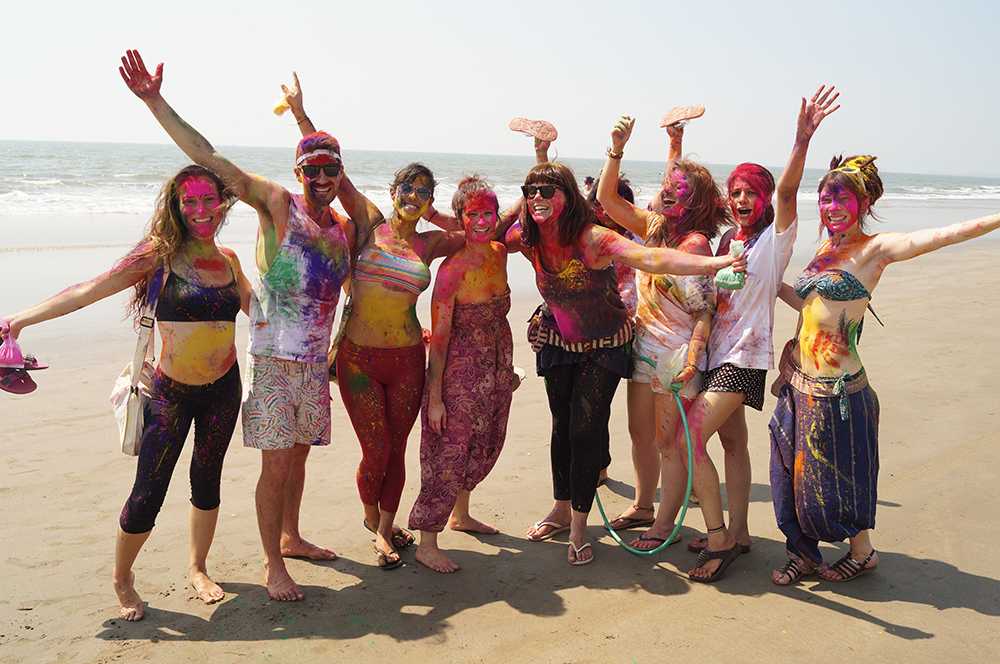
Sea-side Holi: An exuberant group of people swaying their hands in the air after a dash at celebrating Holi.
Likewise, Nepal is also completely drenched in the colors of Holi as people exchange colors and throw colored water on each other during the festival. So much so, people all across Nepal and India greet each other on mobile phones by sending Holi quotes and videos of Holi celebrations. Group dance on Holi songs is also a form of celebration enjoyed by people all over India and Nepal.
Holi is celebrated in the Hindu month of Phalguna, incidentally also around the time of harvest for the rabi crop. Therefore, the date of the Holi celebration varies but generally falls in the Gregorian calendar month of March. Holi was celebrated in the year 2019 on March 21. Holi 2020 will be celebrated on March 10. Similarly, Holi 2021 will be enjoyed on March 29, effectively falling in the month of March but on different dates due to variable days of the Hindu calendar month of Phalguna.
The History behind Holi
The festival of Holi is celebrated for a long time and is an ancient festival. So much so, it carries a description in “Ratnavali”, which is a 7th-century drama in the Sanskrit language. It is also mentioned in ancient Indian texts like the Puranas and by the 4th-century poet Kalidasa.
Holi is also celebrated in the honor of different legends that are associated with it. Notable among them are the Vishnu legend, Krishna legend as well as the Kama & Rati legend. Apart from these legends, Holi also has a cultural significance attached to it, according to which, Holi marks as the day to forgive and forget, wash past sins and errors and start afresh in the journey of life.
The Vishnu legend symbolizes Holi as a victory of Good over Evil as a mark of honor for the Hindu God Vishnu and his follower Prahlada. Mythology recalls how Prahlada’s evil aunt Holika made him sit alongside her on a lit pyre. However, due to her evil intentions and God’s appearance to restore Dharma, it is Holika who gets burned – in spite of having a cloak that granted immunity from burning – and Prahlada who is unhurt. Thus, the burning of Holika celebrates the victory of good over evil, the victory of Dharma over Adharma.
According to the Krishna legend, Holi is celebrated in the honor of the divine love between Krishna and Radha. Holi also ushers in the season of Spring, while Holi is also marked as a festival of love. In a similar vein, the Kama and Rati legend signifies the forgiveness of God Shiva and restoration of the God of Love Kama as the mark of celebration in the form of Holi.
Holika Dahan
As described in the Vishnu legend, the essence of Holi rituals lies in the burning of Holika, who was the demoness with cruel intentions of burning her nephew Prahlada. On Holi eve – one evening before the day Holi is celebrated – large bonfires are erected and lit to mark this occasion of the triumph of Good over Evil. This day is called the day of Holika Dahan.
Apart from conducting pooja, scores of people also dance and sing around the fire in celebration, while also walking around the fire thrice in a row. The timing of performing Holika Dahan also varies according to the location and the sunset times of each place. Accordingly, as per legends, performing the ritual at the right time is crucial to keep away misfortune and evil from our lives. This time corresponds to Pradosh Kaal, which is the time when the day and night meet. However, the ritual must be performed after the Bhadra Tithi is over.
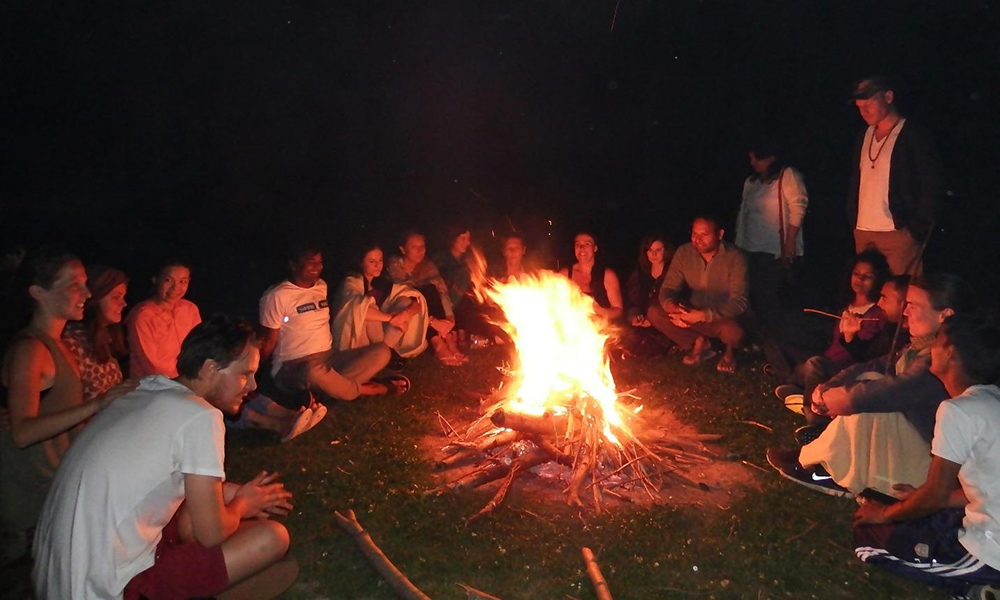
Holika Dahan Bonfire: People assemble near a Holika Dahan bonfire, which is lit on the eve of Holi and is followed by celebrating the festival with colored powder.
Holi is celebrated in the Hindu month of Phalguna. Unlike other festivals celebrated in India, there are no major rituals performed on the day of Holi, barring the Holika Dahan pooja on the eve of Holi. Holi is celebrated in the month of March, although the date varies due to the Hindu calendar, which is based on celestial movement and has an average of 29.5 days in a month.
Holi Dates
Holi 2020: 10th March 2020
Holi 2021: 29th March 2021
Holi 2022: 8th March 2022
As Holika Dahan is celebrated just a day before Holi – on Holi eve – the dates for Holika Dahan for the year 2020, 2021 and 2022 will be 9th March, 28th March and 7th March respectively. The date of the Holi festival is selected based on the movement of the moon. It generally falls on the day after the full moon in March each year, with that time falling in the Hindu month of Phalguna.
If you are planning to attend the yoga teacher training in India during the holi, select your course as per the dates above.
The Colors of Holi
The festival of Holi is incomplete without the use of colors. People apply colors on each other’s faces and bodies either in a powdered form or along with water. The colors of Holi were historically made from natural colors and extracts of flowers, turmeric, beetroot, berries, leaves, and sandalwood paste, with the timing also favoring the use of flowers when trees blossom. However, in the present day, colors are made from industrial dyes and pigment, thus replacing natural colors with synthetic colors. This has led to problems like skin irritation and inflammation. This lack of control over the source of colors has led to health problems among people.
Holi Powder for Sale: Shops showcase the vivid colors of Holi powder put up for sale in the local market.
Like the rituals associated with Holi, the colors of Holi also have a meaning and significance attached to them. The following are the symbolism associated with Holi colors:
- Red – The Color Red is a symbol of love, fertility, and passion.
- Yellow – The Color Yellow symbolizes knowledge, learning, meditation, happiness, and peace.
- Pink – Pink is the color of compassion and care
- Blue – The color of God Krishna’s face, and of the oceans and sky.
- Green – The Color Green symbolizes nature as well as the start of new beginnings and the spring season
- Purple – The color of Purple is a symbol of mystery and magic.
How is Holi celebrated?
Holi is celebrated in a variety of ways across the country. In the town of Barsana in Uttar Pradesh, Holi is played in the form of Lathmar Holi – Holi with sticks – where women dressed in traditional clothes symbolically beat men with sticks while applying colors all over the town.
In the towns of Mathura and Vrindavan of Uttar Pradesh, Holi is celebrated in a traditional manner. This means that temples and junctions of Mathura are covered by colors in the run-up to the festival. Festivities start almost 40 days in advance of the actual date of Holi, with the Dwarkadheesh Temple being the most coveted among visitors for a glimpse of the celebrations.
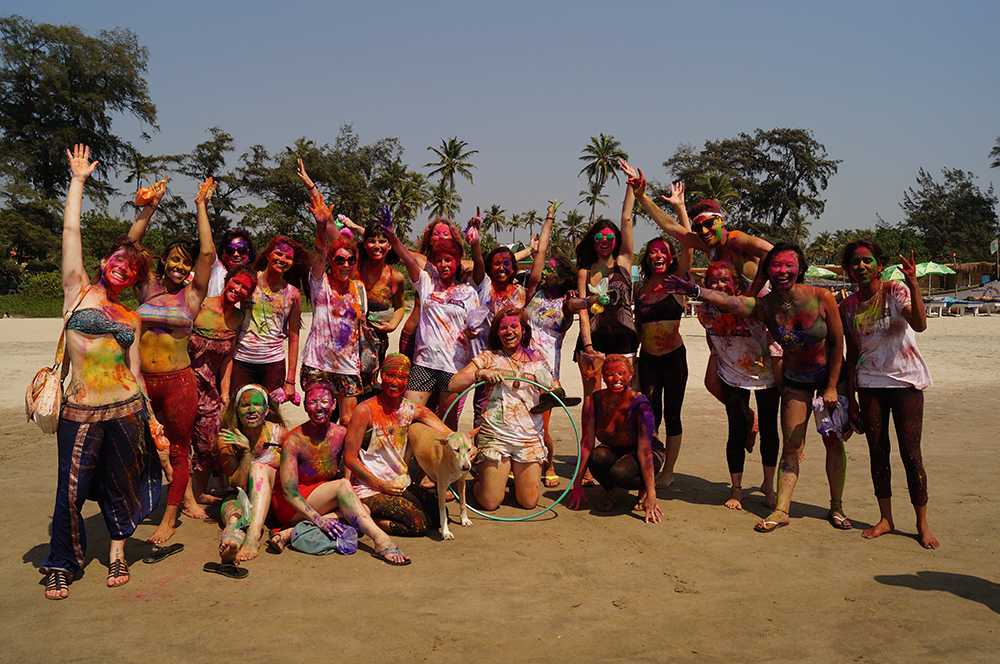
Holi by the beach: A group of visitors poses for a photo after enjoying the colors of Holi at the beach.
The town of Shantiniketan in West Bengal is famous for its cultural Holi, wherein cultural programs and activities are organized, followed by regular celebrations with colors. In a similar way, the town of Purulia in West Bengal is known for its Folk Holi with different types of folk art and dances organized in the commemoration of the festival.
Anandpur Sahab in Punjab is known for its warrior Holi, which demonstrates physical agility among participants and while also organizing military exercises, martial arts, turban tying, wrestling, and mock sword fighting.
Apart from the above, musical Holi in Delhi, royal Holi in Udaipur, Holi with elephants in Jaipur and the less exuberant form of Holi of Hampi in Karnataka is also celebrated across India.
What not to do during Holi celebration
As joyous as the festival of Holi may seem, there are particular mannerisms and ways to follow when you are celebrating Holi with someone. There are also certain no-nos when it comes to behaving with fellow people:
- Avoid coloring anyone forcefully
- Don’t apply colors on animals
- Stop the wastage of water
- Stop throwing water balloons that have filth and dust in them
Holi Safety Information
Along with Holi comes a tendency to let loose and be more casual and friendly in your approach to fellow people. Due to this, males in India usually take this casual attitude too far and behave disrespectfully, especially with women. This includes molesting women, forcefully applying color on them, and touching inappropriately.
In light of this, it is recommended that women should avoid going out alone in public places and prefer to enjoy the festival in their own close group of known people and friends. Most males in public places overdose on local intoxicants like Bhaang and then display lewd tendencies and behavior. These people move around in groups and can be quite aggressive in their actions. It is therefore advisable to exercise adequate care and precaution while enjoying the festival.
If you do make plans to enjoy street Holi, it is preferred to do so in the early morning. This is the time when it is relatively safer. You can also come back my mid-day before the inebriated folks come along. Many good hotels also organize close-knit parties for their guests which are perfectly safe.
During the course of the Holi celebration, you must expect to be colored on your face, mouth or even ears. You must take care to protect your eyes and avoid opening your mouth. A polite denial while someone tries to apply color to sensitive body parts can also work to avoid any health issues.
Famous Bollywood Holi Songs
Bollywood has glorified the festival of Holi with a lot of songs and performances celebrating the festival with vigor and fun. The following are some songs dedicated by Bollywood to the Holi festival:
Balam Pichkari
Holi Khele Raghuveera
Rang Barse Bheege Chunarwaali
Badri ki Dulhania
Holi ke Din Dil khil Jaate hain
[rv id=”-GPAzK1hMfg”]
Do me a favor let’s play Holi
Holi Images: Colorful Photos of the Holi Festival
Family time with Holi: A tourist couple enjoying the colors and fun associated with celebrating Holi with his child.
People celebrating Lathmar Holi: Lathmar Holi is a local Holi celebration that takes place a few days before the actual festival date. It is popular near the town of Mathura in Uttar Pradesh.
Flying colors of Holi in the US: A large congregation of people is completely drowned in the colors of Holi while dancing along the way.
Holi all over: A color-laden elderly man stands in a serious pose as people in the background enjoy the festival of Holi by showering colors on each other.
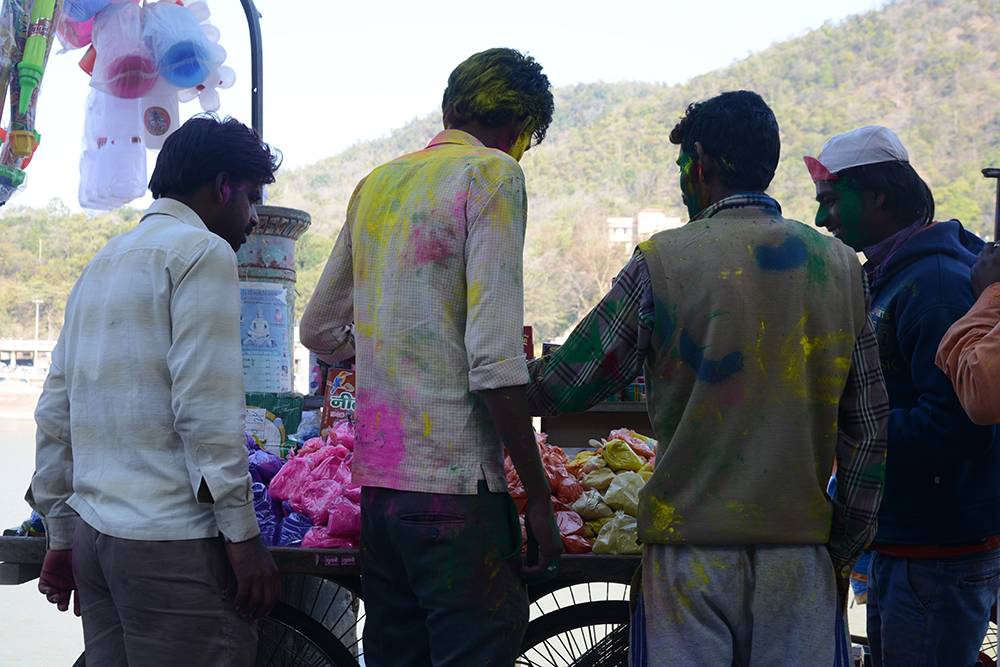
Shopping time: People gather around a stall selling packets of colored powder and water guns on the occasion of Holi.
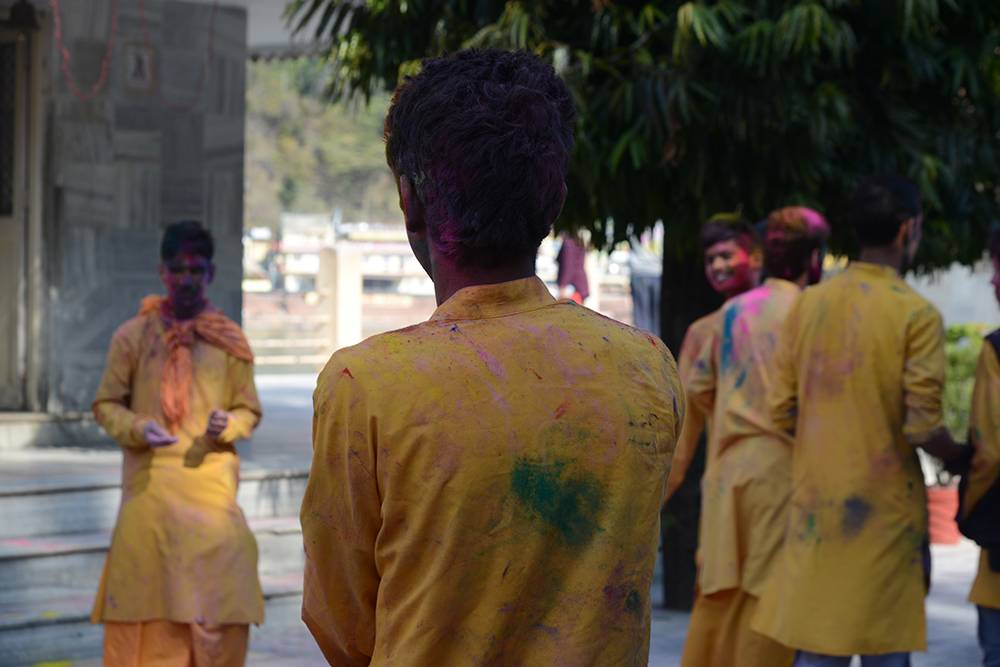
Holi at the Ashram: People and priests at the ashram celebrate Holi using colored powder.
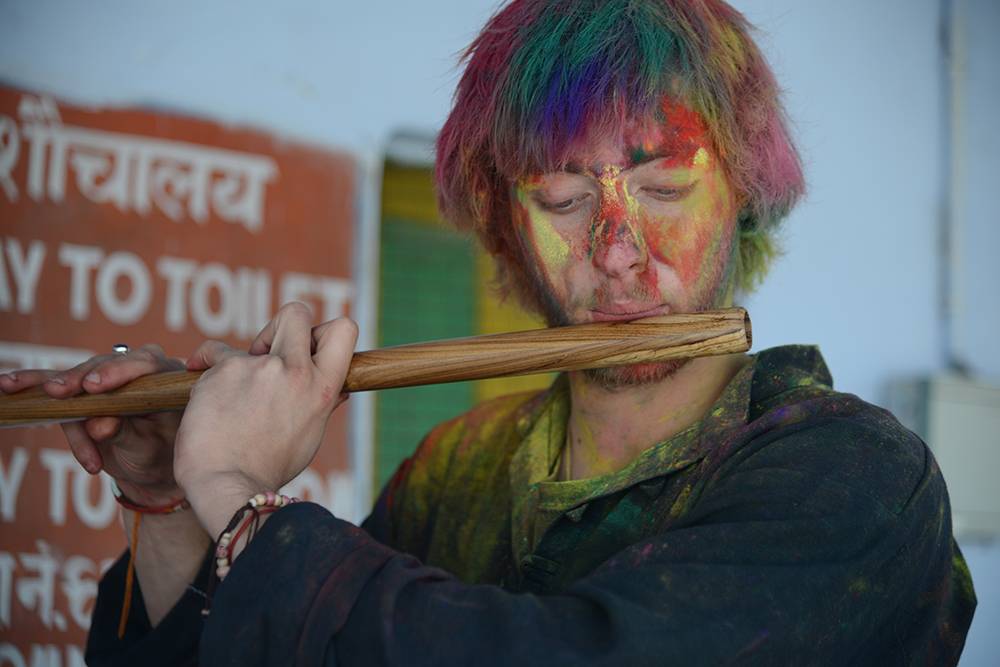
A hand at the Flute: A “colorful” tourist tries his hand with a Flute on the occasion of Holi.
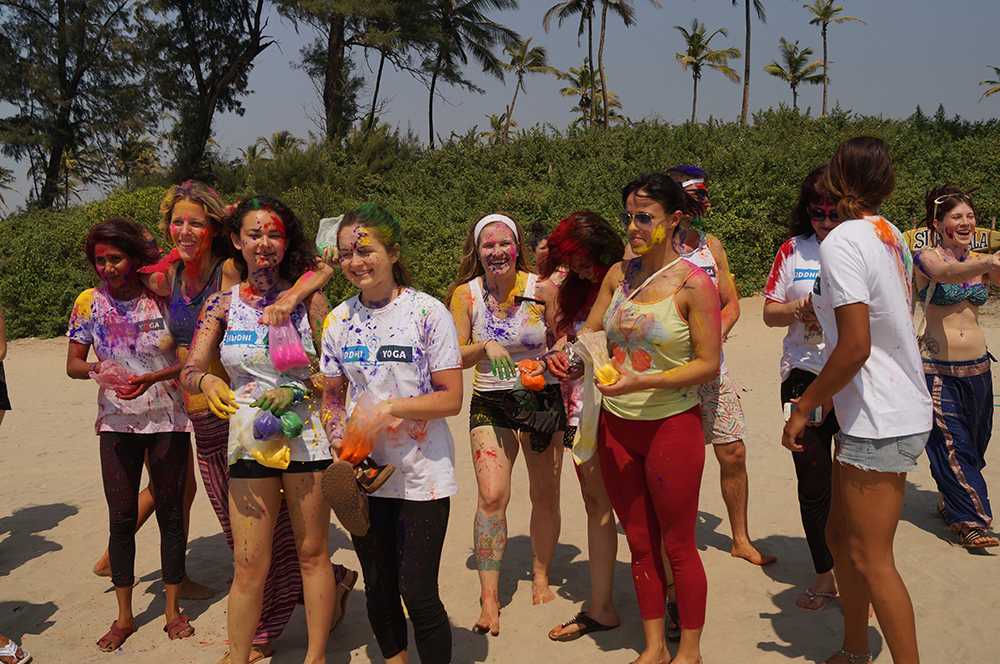
And the show goes on: A young group of visitors enjoys applying colored powder on each other while celebrating Holi at the beach.
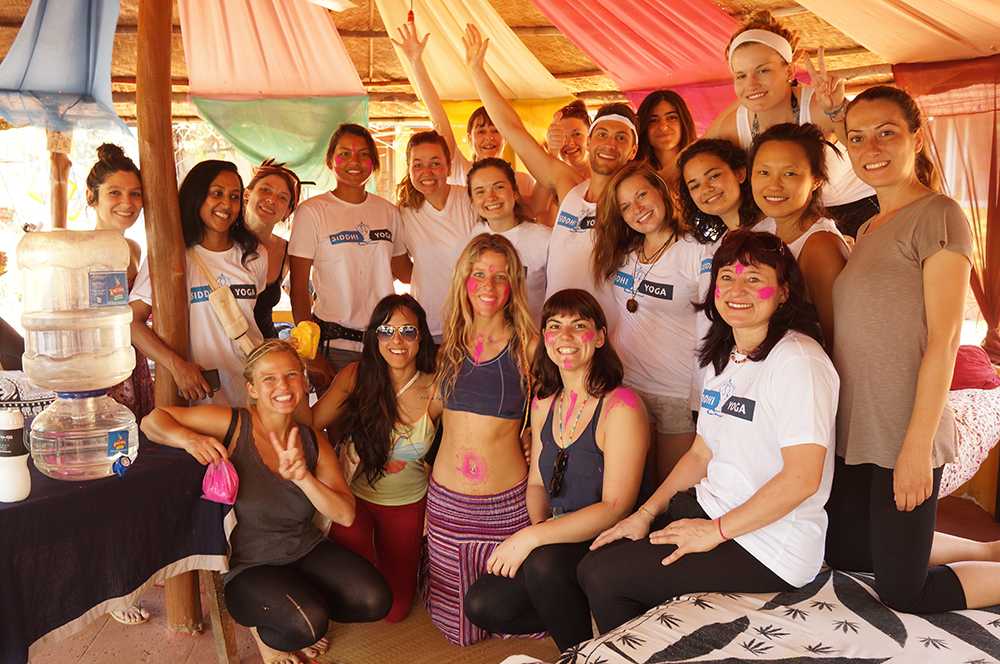
Holi at the shack: A group of visitors poses for a picture after a dash of pink color while celebrating Holi.
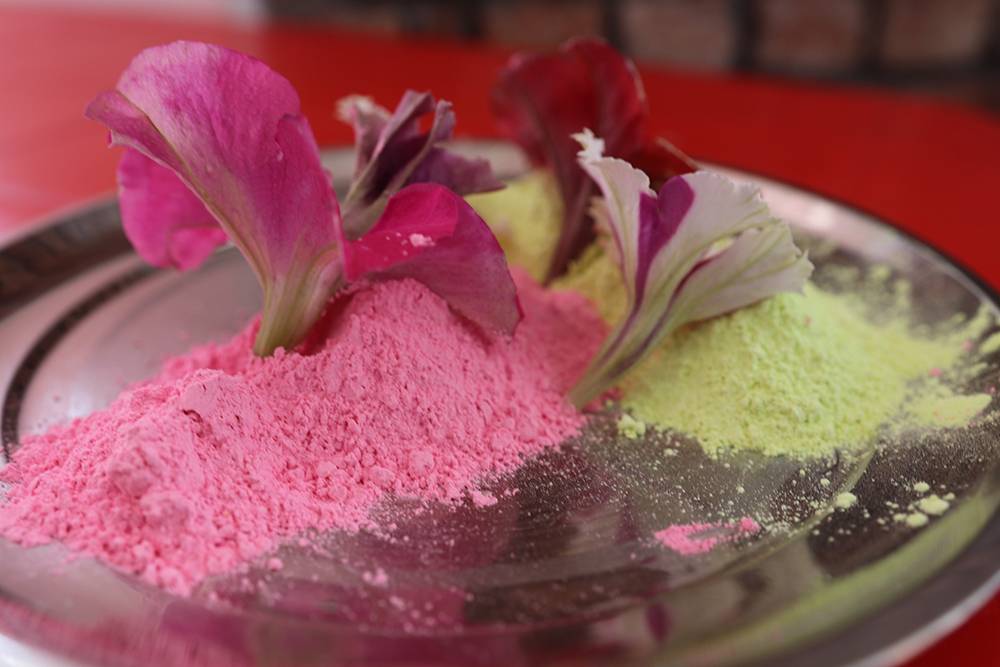
Organic Colors: A plate of flower-extracted organic colors shown on a plate along with a matching set of flowers.
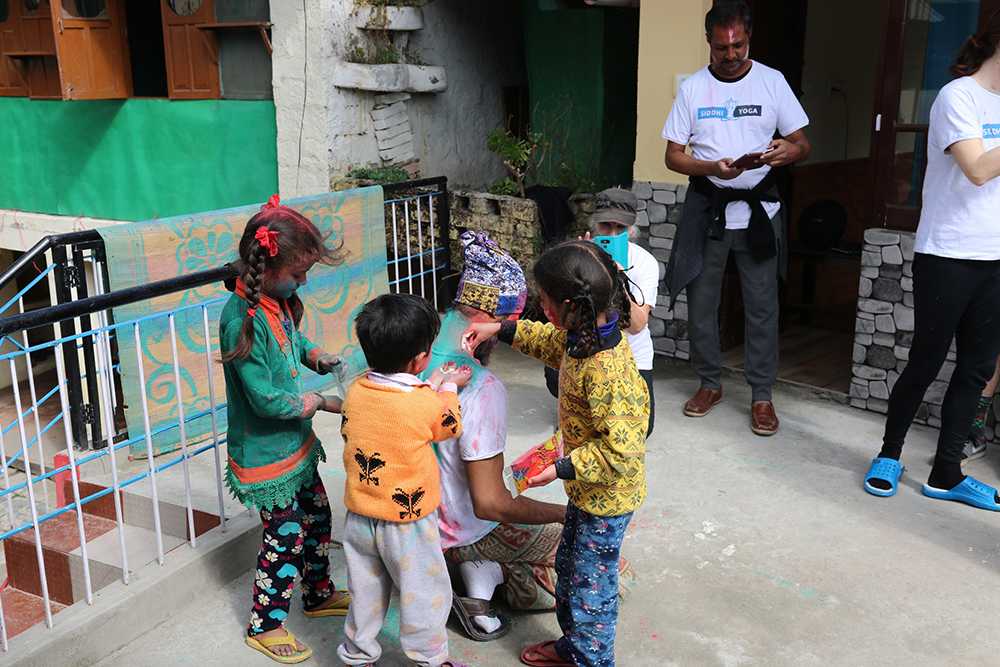
Children’s Holi: A couple of children celebrate Holi by applying colors on a grown-up man.
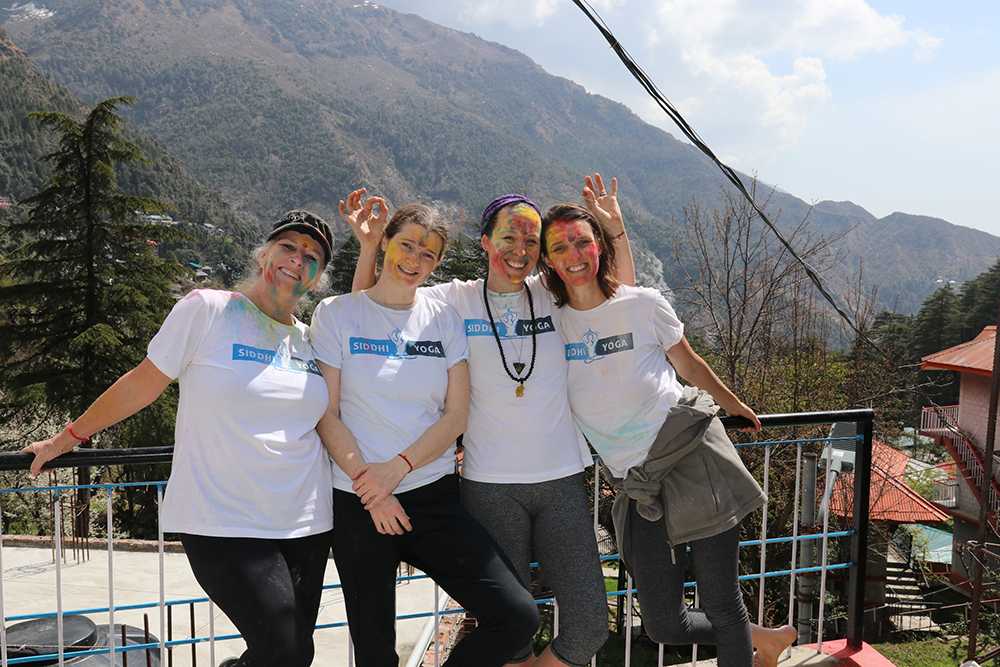
Holi amidst mountains: A group of yoga-enthusiast girls poses by the mountain after a splash with colors in Holi.
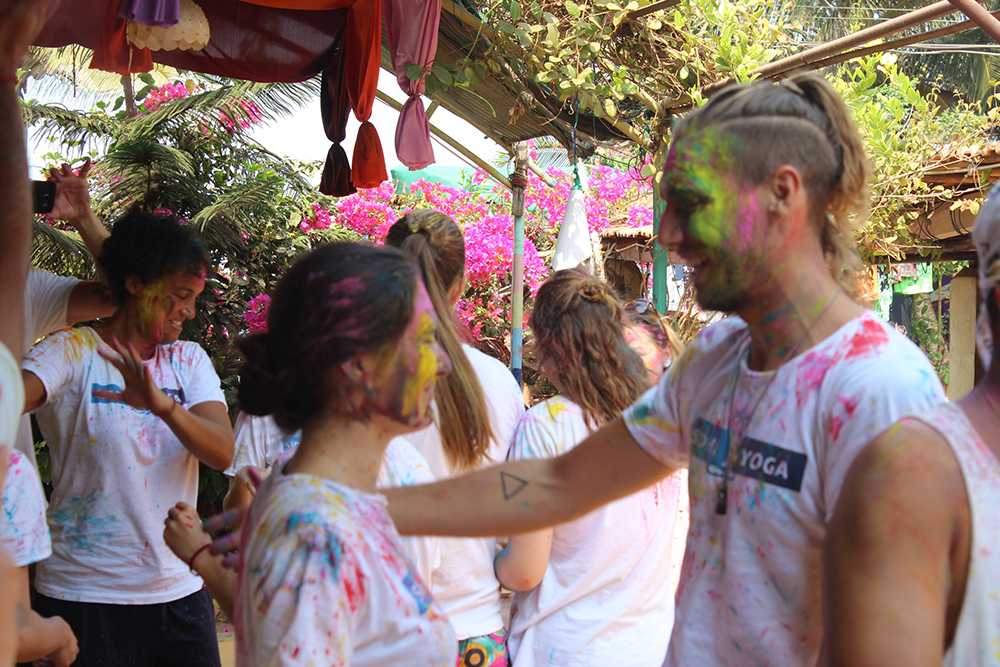
Yoga with colors: A group of American yoga learners enjoys the colors of Holi following their morning practice.
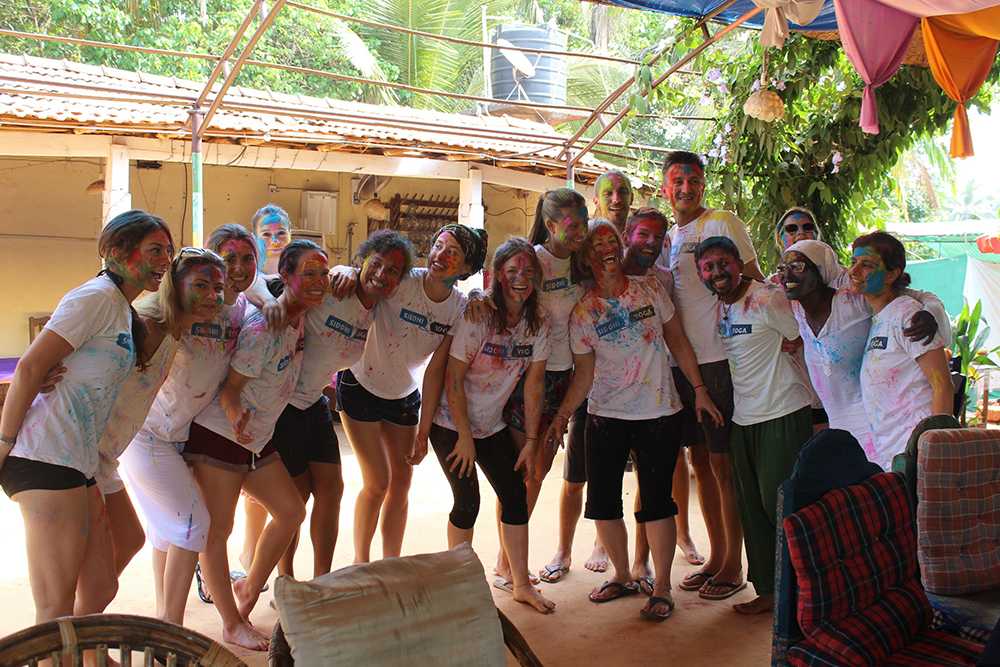
Bonhomie Time: A group of bubbly girls and guys poses for a candid photograph after hand at coloring each other’s faces with Holi powder.
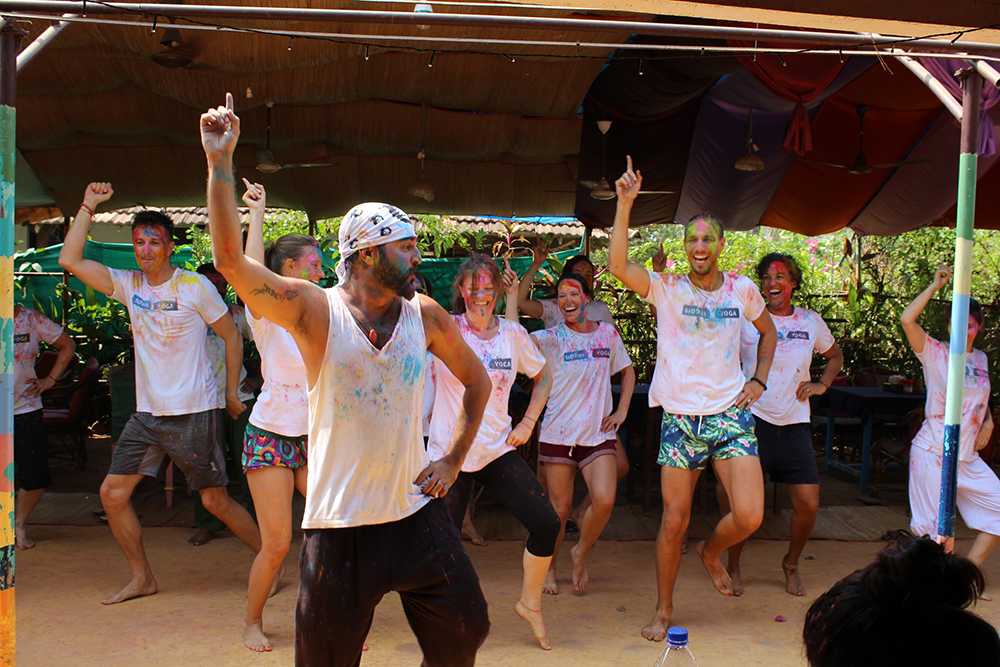
Group Dance: Yoga visitors shake their legs to music in the middle of the Holi festival.

Color me everything: A gang of girls cannot hide their happiness after drenching themselves in colorful powders on the occasion of Holi.
Conclusion
Overall, the festival of Holi means different things for different people all across India. While some regions prefer the pomp and show while celebrating, others like the cultural performances and simplicity of playing around with powdered organic colors. No matter the way of celebration, Holi is a festival that binds the people of the country with unparalleled bond that no other festival can compare.
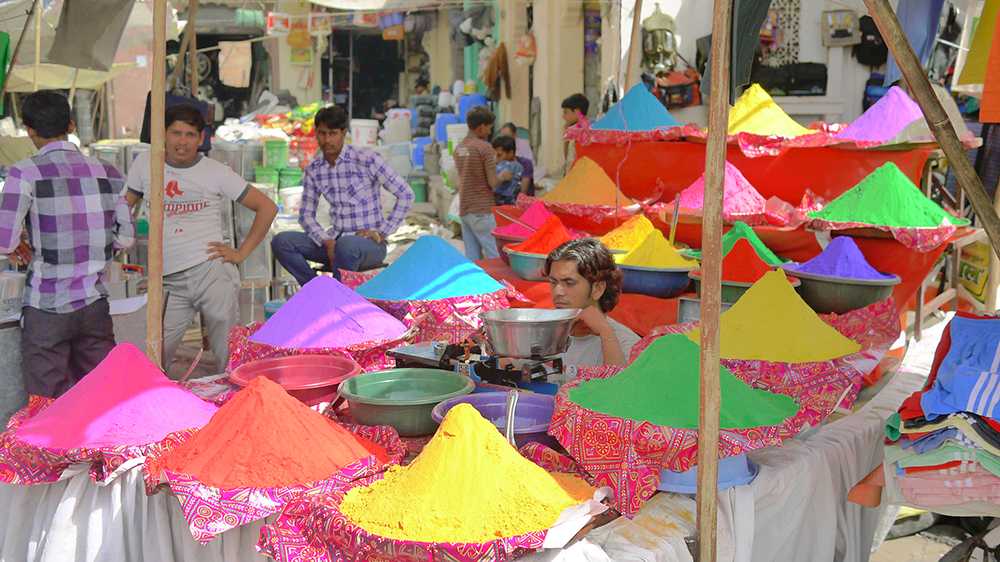
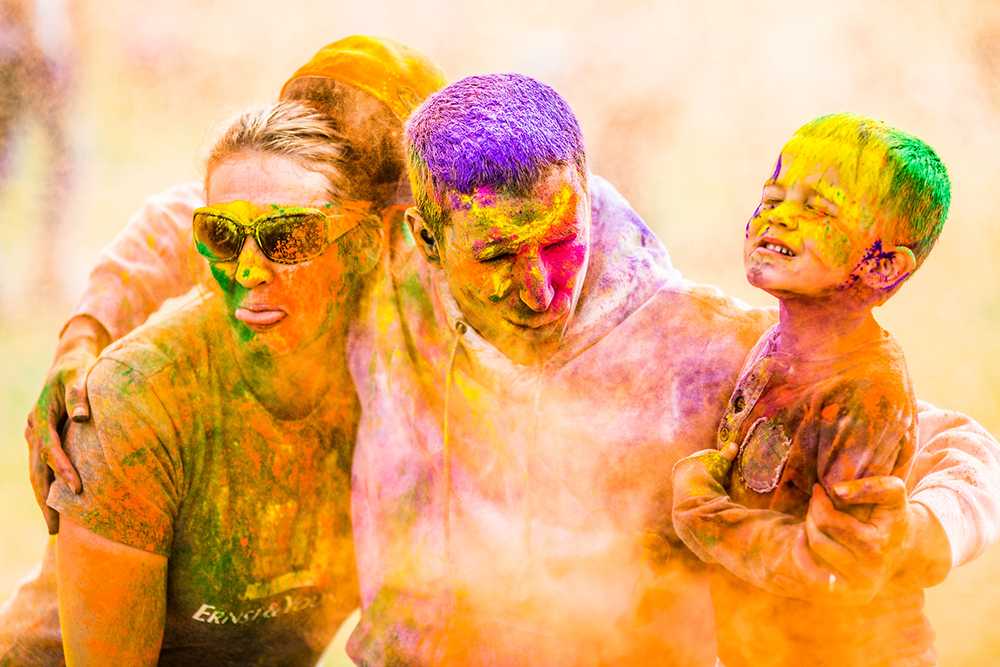
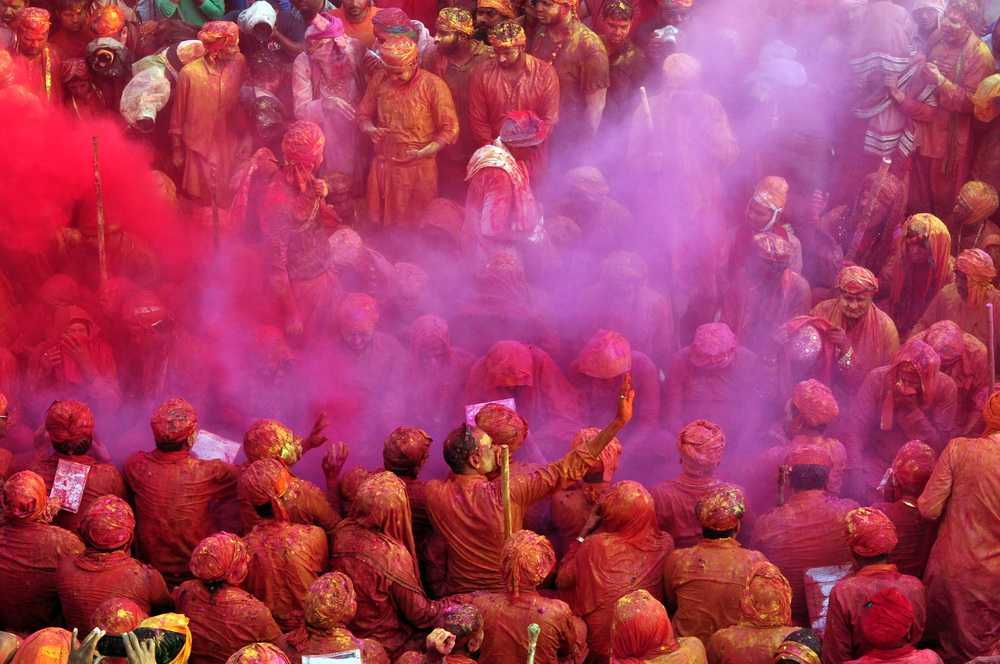
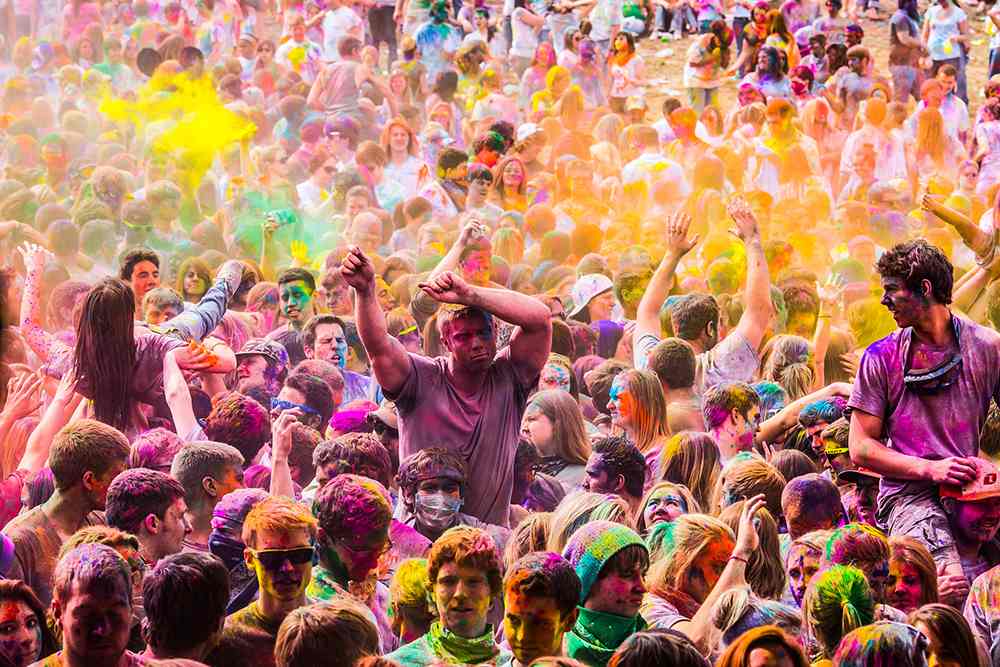
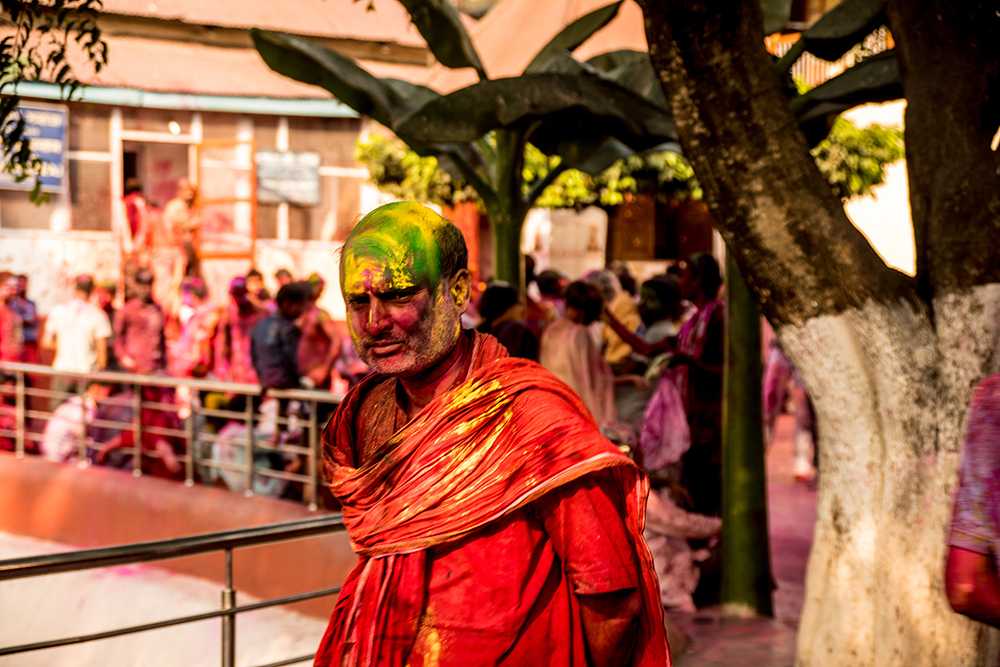
Responses